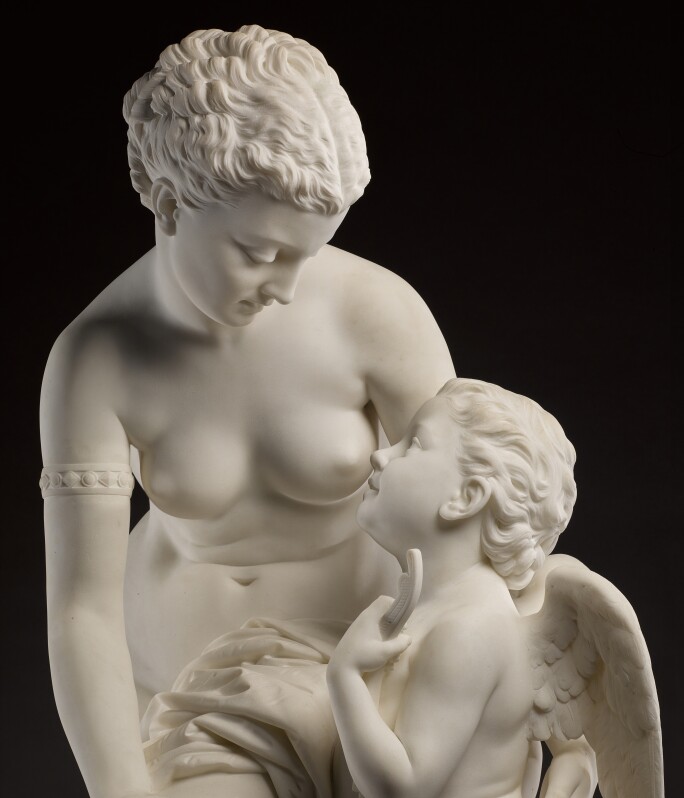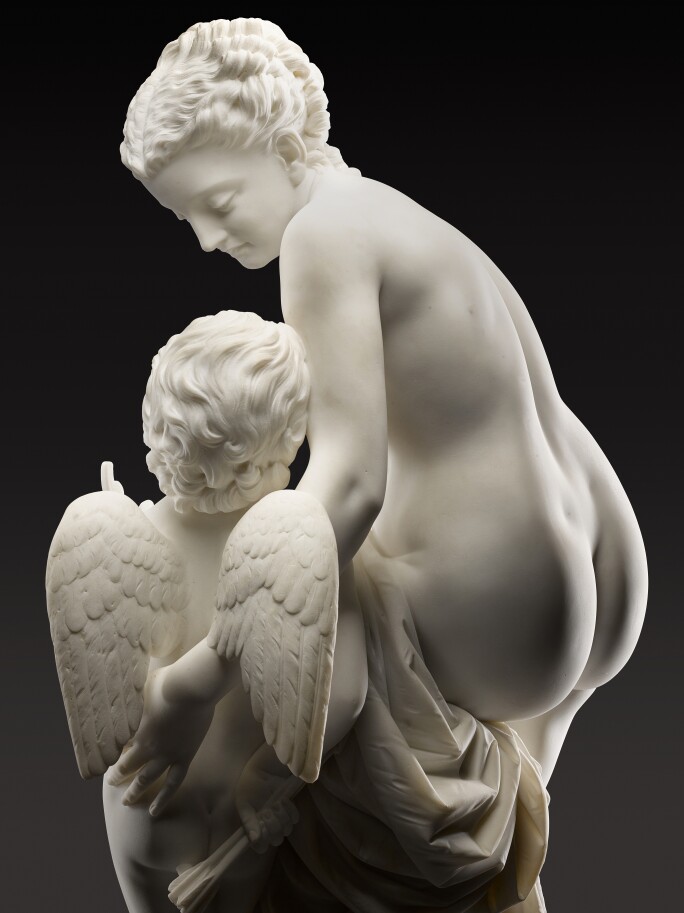
This impressive marble portrays a winged cupid standing clutching his bow, looking up at Venus semi-clad in draped robes with her hair elaborately rendered in tight curls. The piece is an important example of the sculptor’s early work, demonstrating the sophistication of his skill even at the beginning of his career.
Born in 1843, Sir Charles Bennet Lawes-Wittewronge, 2nd Baronet was an English athlete and sculptor. After a successful university career as a rower, winning at Henley Royal Regatta in 1863 and gaining a rowing Blue in the 1865 Boat Race, Lawes changed direction and trained as a sculptor. He began his training in London under John Henry Foley RA (1818-1874), a sculptor renowned for his exceptional technical skill and ability to capture the life-like qualities of his subjects. Lawes relocated to Berlin in 1869 to train under Hugo Hagen (1818-1871), himself an assistant in the studio of Christian Daniel Rauch (1777-1857).
After returning to London and renting a studio in Chelsea, Lawes exhibited his first work at the Royal Academy, Girl at the Stream, in 1872. The present marble appears to be the Lawes’ second major work and is certainly his second work exhibited at the Royal Academy, appearing in the Summer Exhibition of 1873 alongside another piece similarly depicting ‘figures and cupids’ (Graves, op. cit., p. 394). He garnered much formal recognition throughout his career, receiving an honourable mention from the Salon des Artistes Français in 1878 (Bénézit, op. cit., p. 358), and exhibiting several other works at the Royal Academy, including Daphne in 1880 and The Panther the following year.
In 1882 Lawes became embroiled in an infamous libel case after he suggested in the magazine Vanity Fair that another sculptor, Richard Claude Bell, had taken credit for someone else’s work. The case focussed on the issue of the balance of participation of others in the creation of a piece for which a single sculptor attaches their name. In 1902 Lawes was one of the founding members of the Royal Society of British Sculptors, and later its second president.
The Death of Dirce is perhaps Lawes’ most famous piece. A sculptural group based on the classical Farnese Bull, the work was initially conceived in bronze and exhibited at the Royal Academy in 1908. A later version of The Death of Dirce reimagined the group in monumental marble and is now in the grounds at Rothamsted. The bronze version currently stands at the left-hand entrance of Tate Britain.

RELATED LITERATURE
E. Bénézit, Dictionnaire des Peintres, Sculpteurs, Dessinateurs et Graveurs, vol. 8, Paris, 1999, p. 358; A. Graves, The Royal Academy of Arts; a complete dictionary of contributors and their work from its foundation in 1769 to 1904, vol. 4, 1905, p. 394